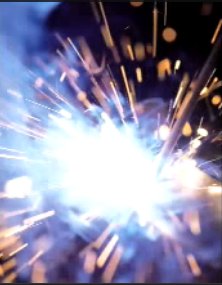Honeycomb Laser Table: Hidden Danger
CO² flatbed lasers are ideal for cutting organic materials especially acrylic and wood. Many users who cut these materials use a honeycomb laser table to support the parts being cut without cutting into the laser bed.
Honeycomb tables are also used to minimise the risk of a backward laser beam reflection. When the beam passes through the material into the honeycomb cell it encounters a void which allows it to pass well out of focus and not reflect back into the material.

A honeycomb laser table is usually quite rigid but on cheaper systems it can sag due to a lack of support from underneath. This can cause the very backward laser beam reflection that the honeycomb is used to prevent in the first place!
Fire risk
Another function of the honeycomb is to allow fumes to be drawn through it and then out of the fume extractor allowing a laminar flow front to back. The front of the laser is vented through a labyrinth to make it laser safe; the extractor at the back of the machine draws in air from under the honeycomb.
However, it’s not only fumes that are drawn through the honeycomb. There are particles too, especially with acrylic workpieces. This residue is drawn to the sides of the honeycomb by the natural flow of air and starts sticking to it. The residue builds up to a point where the honeycomb is blocked, air cannot flow and the residue catches fire.
Such a fire can be serious. It can badly damage the laser; it could set fire to the premises its located in.
Maintenance the remedy
Honeycomb laser tables are relatively cheap so should be treated as consumables and replaced at regular intervals. If cost is a concern, it is possible to clean the honeycomb using an oven cleaner and a pressure washer. However, because the honeycomb is quite fragile and easy to damage only as a last resort!
The key is to check your honeycomb laser table regularly before residue and dirt build up the point where it becomes a serious problem. Such a check takes seconds and, depending on usage, should be carried out daily, certainly no less than weekly.
Checking and replacing the honeycomb table are all part and parcel of the laser maintenance programmes available from TLM. We can customise a PM contract to best suit your specific requirements. Such a contract can also incorporate emergency call-out cover, giving you a priority engineer call-out and saving valuable downtime.
For full details, please contact sales@tlm-laser.com.